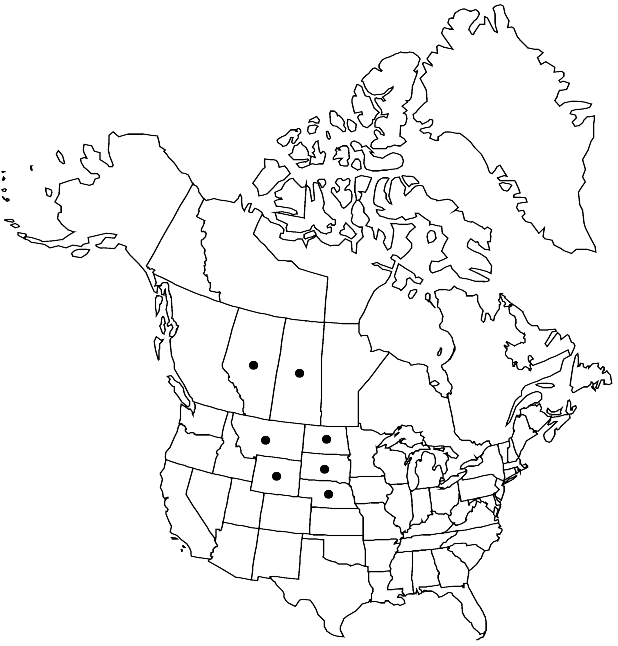Physaria spatulata
Novon 17: 190. 2007.
Perennials; caudex simple, (relatively small); sparsely to moderately pubescent, trichomes 4-rayed or 5-rayed, rays furcate or bifurcate, not fused, (tuberculate). Stems simple from base, erect to decumbent, (well-exserted beyond basal leaves, loosely spreading), 0.3–1.2 dm. Basal leaves (erect to prostrate, petiole distinct from blade); blade (inner) spatulate to oblanceolate, or (outer) oblanceolate or orbicular, 1.5–4 cm, margins entire (rarely folded). Cauline leaves: blade spatulate, distinctly different from basal. Racemes moderately dense, (6–20-flowered). Fruiting pedicels (strongly sigmoid), 10–20 mm (2 times longer than fruits). Flowers: sepals (pale-yellow), elliptic, 3.5–5 mm; petals lingulate, 6–9 mm. Fruits lanceolate or orbicular, slightly inflated, (2.5–) 3–6 mm, (apex usually strongly narrowed); valves pubescent, trichomes sparse and closely appressed to surface; ovules 4–8 per ovary; style 2.5–6 mm (usually ± equal in length to mature fruit). Seeds plump.
Phenology: Flowering May-early Jul.
Habitat: Grasslands, subalpine meadows, sagebrush, scattered pines, fellfields, calcareous (sometimes alkaline) substrates
Elevation: 900-2900 m
Distribution

Alta., Sask., Mont., Nebr., N.Dak., S.Dak., Wyo.
Discussion
Selected References
None.
Lower Taxa
"not" is not a number. "elongated" is not a number."thick" is not a number."dm" is not declared as a valid unit of measurement for this property.